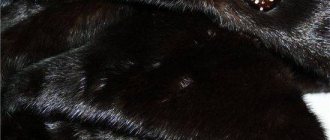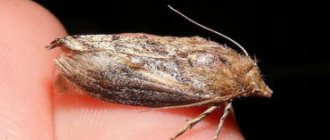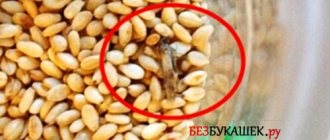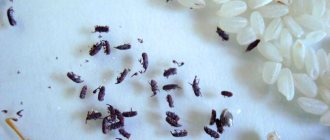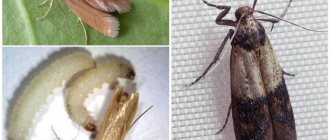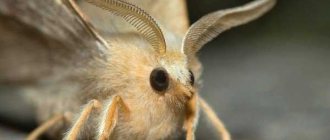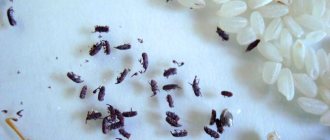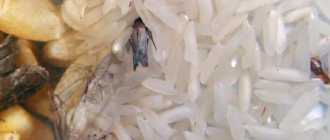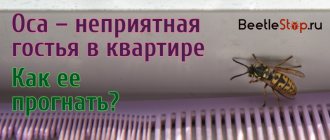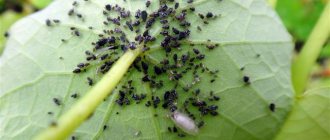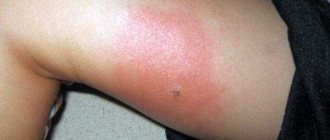Moths are pests that can cause significant material damage to a home. Isn’t it true, very often these days you can hear almost a catchphrase – a moth ate your fur coat. How is this possible in the age of advanced technology and what can be done to prevent this from happening again?
The fur moth looks repulsive
Important! The fur product was ruined by fur moths, which housewives sometimes call clothes moths. But in fact we are talking about two different types of insects. Although, in principle, all these pests look the same.
How to detect moths on a fur coat?
The fur moth is a clay-colored insect with a hairy body. Such a creature does not live long, but in a short time, it manages to lay multiple numbers of larvae. It is these “invisible” larvae that cause widespread damage to your fur coat. There are some signs indicating that pests have settled in a fur product.
It’s worth checking your fur coat if:
- You notice a flying moth in the house. Before you kill, check your kitchen cabinets to see if they are kitchen moths. Then reconsider fur products.
- New folds and clumps have appeared on your fur coat. She began to look unkempt.
- At the bottom of the cabinet they found lint, like something left from a hairdresser. These are traces of the fur being “cut” by the larvae.
- You have discovered “bare” islands or tunnels without fur - this is a red light. It's time to act.
Above is a photo of a fur coat eaten by moths.
Symptoms of infection
It is difficult not to notice the signs of moth infestation of things, as they immediately catch the eye:
- A fur surface infested with insects loses its appearance and will not look attractive due to the formation of lumps.
- The paths cut by the larvae cause the formation of folds and wrinkles in the product.
- The presence of pests is indicated by fur pile sheared by caterpillars.
- The formation of characteristic “bald patches” on the surface of things is also a sign that a moth is eating a fur coat.
- Presence of winged individuals indoors.
Having discovered symptoms of moth infestation of a fur coat, it is necessary to begin treating the product and the entire wardrobe as quickly as possible.
What to do if a moth has eaten a mink coat?
Many women, seeing an unpleasant “surprise” for themselves, panic, get upset, mentally throw away the damaged product and make plans to beg their husband for a new mink coat. But if you love a product very much, you don’t want to give it up. You can avoid further eating of your fur coat by moths. We offer some tips for eliminating unwanted guests.
- To begin, take your fur garment outside. Shake it well. Such manipulations will save you from existing insects. In addition to mechanical impact, temperature shock also helps. These individuals are afraid of high and low temperatures. If the moth appears in the summer, the heat and sunlight will kill the existing larvae. It also fights moths and frost in winter.
- A good addition to the previous actions would be to comb out the eaters. But since it is difficult to destroy the larvae with a regular accessory, use a fine-toothed comb. But you need to do this exclusively on something, so that you can easily destroy the pests later.
- In difficult cases, insecticidal agents are used. Today, there are various chemicals that will help cope if moths start eating fur coats. An aerosol with an insecticidal spray is used to treat the fur coat and the closet where it was located. Afterwards, the fur product is wrapped in a cover. Clothes should be sprayed periodically every 2-3 weeks.
Also read: How to quickly and easily get rid of house moths
To prevent the appearance of moths in your wardrobe, you need to carry out prevention. Check out the video that will help you carry out all the activities correctly.
Optimal conditions
Those who decide to protect their fur coat from damage in the warm season in an ordinary closet should know how to properly care for the product and properly store a mink fur coat. The main conditions are described in the table.
Table - Requirements for storing mink fur coats
| Condition | Primary requirements |
| Space | — Post freely; - choose wide hangers; - purchase a fabric cover |
| Lighting | — Avoid direct sunlight |
| Temperature | — Ensure the indicator is not higher than 15°C |
| Moth protection | — Use sachets, sprays |
| Removing accessories | - Break off decorations; - remove the belt from the belt loops; - remove change from pockets |
Space and removal of accessories
First of all, you need to free up space in your storage closet.
It is important that the fur coat is not squeezed or wrinkled by neighboring items. The product should be placed on wide, durable hangers, the size of which corresponds to the size of the clothing.
The product must be fastened with all available hooks and buttons to avoid deformation.
It is best to store a mink coat in the case that comes with it upon purchase. In addition, you can purchase special covers in fur stores or regular hardware stores. The beauty of the cover is not only that it will protect the fur from mechanical damage, but also that it will protect the fur coat from moths.
Before hanging mink clothes in a case, you should remove brooches, jewelry, belts, and remove all things from your pockets. This is done so that the fur does not deform and the base does not stretch.
You cannot place a fur coat in polyethylene, since the fur will not be able to “breathe” in it. If a special cover is not available, it is better to make it from cotton fabric and attach a moth sachet inside.
Lighting and temperature
Since fur is afraid of sunlight, the place where it is stored should be dark but well ventilated. If summer hibernation occurs in a closet, its doors should be left open regularly to allow fresh air to flow into the fur.
Mink coats love the cold: the optimal temperature for them is from 5 to 15°C. It is almost impossible to achieve such conditions at home, so as an alternative, you can set the air conditioner in the dressing room to the minimum temperature or regularly take the fur coat out to the balcony for ventilation. To prevent the sun's rays from falling on the fur, the product should not be taken out of the case when airing.
Moth protection
Keeping fur away from the sun and creases is just as important as keeping a mink coat away from moths. Today there is a huge variety of substances on sale that repel butterflies and caterpillars of these insects.
Buy aerosols or sachets. But you can make anti-moth bags with your own hands by placing dry tangerine peels inside. According to reviews, you can replace citrus fruits with bergamot or lavender.
It is very important that there is no naphthalene, chemicals or their breakdown products left in the closet - this can irreversibly damage the fur. Interestingly, cedar negatively affects the condition of a mink coat, so it is important that the cabinet for storing it is not made of such wood
Knowing how to properly store a mink coat, you can wear it for more than one year. Following important but simple rules will give you the opportunity to enjoy fur clothing for ten seasons or even more.
Prevention and rules for storing fur coats
Before you send your furry beauty into “summer hibernation,” you need to carefully prepare. This will prevent the appearance of pests.
To do this, it is recommended to carry out the following activities:
- Be sure to clean the product after the end of the season. Existing traces of wear are removed by dry cleaning.
- Fix any problems with the fittings. Carry out cosmetic repairs if necessary.
- Take care of a protective anti-moth cover, which will prevent parasites from getting to the treat. Don't skimp on this accessory. You can purchase covers soaked in essential oils, which moths really don’t like.
- To prevent pests from touching the fur product, create favorable storage conditions, ventilate the product from time to time, and let it breathe.
Danger to humans
Knowing about the ability of moths to damage natural fabrics and food, you should carefully approach the choice of goods when purchasing.
Not all suppliers guarantee the quality of the product; cereals on store shelves may contain parasite larvae, and if the clan penetrates into a home, it will quickly begin to reproduce in favorable temperature conditions.
If you eat affected cereal, then in addition to the larvae in the plate, you can get severe poisoning. The fact is that at the site of parasite production, traces of their vital activity, skins and feces remain.
Therefore, to avoid ending up in a hospital in serious condition after eating cheap cereal, contaminated bags should be disposed of.
Remedies against fur moths
In addition to proper storage, use preventive measures. In this case, you can resort to different methods.
Insecticidal method
To prevent moths, not only scented covers are used, but also various tablets, plates, hanging fillers, and stickers. These items are soaked in essential oils, such as citrus, mint, lavender, pine and other repellent aromas. This is not harmful for us, but for insects it is a disastrous remedy. All kinds of aerosols will also help protect your fur item from parasites.
Folk way to get rid of moths
The most common remedy for moths was and remains tobacco. Place it at the bottom of the closet or directly in the fur coat. In addition, bags of lavender, mint, rosemary or geranium are excellent at repelling these insects. You can make such products yourself. Citrus peels are also useful as a preventive measure. You can also use essential oils by soaking a cotton pad in them. Well, how can you do without your favorite persistent perfume? To prevent moths from eating your fur coat, apply a scent to it and put a cover or polyethylene on top.
Also read: Food moth: causes of occurrence and how to get rid
It doesn't matter which option you choose, the main thing is the result.
What does the parasite eat?
To understand what food moths eat, you need to inspect the kitchen set and cabinets in which food is stored. The maximum pleasure is obtained by the butterfly that eats:
- Flour products.
- Rice, pearl barley and buckwheat.
- Pre-dried fruits.
- Some sweets.
- Tea (rarely consumed).
- Plants that the parasite feeds on in nature.
It is difficult to find larvae and adults, since pests take a responsible approach to the choice of shelters. To detect the presence of parasites, you need to know what they eat. Additionally, other signs should be monitored:
- In the evening, small gray or brown butterflies move around the kitchen.
- Containers and bags used for storing grains and cereals contain small cobwebs or lumps.
- There are small passages in dried fruits or flour products.
The answer to this question is simple; it all depends on the type of pest. It is worth knowing that an adult eats practically nothing. Only larvae laid by an adult can actively feed. If the food source is suitable for them and there is a sufficient amount of it, the larvae gain weight and size very quickly.
Domesticated moths thrive in a comfortable environment. For example, a dress type takes up residence in a closet or chest of drawers. Valuable protein necessary for its full development is contained in woolen products. It is easily absorbed in her body, giving the cells the necessary energy. In addition to woolen products, moths can feed on clothing containing wool and synthetics. If the insect eats natural fibers intertwined with synthetic ones, then its development will slow down.
This species of moth also loves to eat natural fur coats, sheepskin coats, and carpets. Most often, they choose not very fresh things, because they prefer those that have been worn for a long time. Clothes moths also eat cotton clothing and silk upholstery in furniture. Sometimes she can switch to food and eat cereals, dry bread, and cereals.
The kitchen moth is practically omnivorous. She eats not only groceries, but also fresh fruits, and even dried herbs or spices. Adult flying individuals do not feed at all: they lack mouthparts and a digestive system. The threat is posed by food moth larvae, which require a lot of food to pupate.
The following products are at risk:
- Cereals – semolina, rice, millet, buckwheat.
- Pasta.
- Cereals – oat flakes, seeds, bran.
- Dried fruits – prunes, dried apricots, raisins, figs.
- Flour and bakery products: baked goods, cookies, crackers.
- Cocoa and mild spices.
- Nuts – hazelnuts, almonds, cashews.
- Sugar.
Food moths cannot tolerate the smell of citrus fruits, lavender, tansy, wormwood, rosemary, dill, and cloves. Therefore, for preventative purposes, you can hang dried bouquets of herbs in the kitchen or use essential oils - to scent the air, wipe cabinets, add to water when wet cleaning.
Stages of transformation into food moth from eggs.
The second life of a moth-damaged fur coat
A moth has chewed on your fur coat, are you in despair, don’t know what to do with it? There is a way out of any situation, sometimes very simple, and sometimes expensive.
Before you get upset, evaluate the scale of your losses:
- If you notice minor stains on the collar, it may be enough to simply cover the flaw with a scarf or shawl.
- A chest island will hide a brooch of a suitable size, with a distracting effect.
- If the larva has damaged inconspicuous places, you can simply shade them with paint, a marker, shoe polish, just choose the tone.
- If you need to get rid of the affected areas on your fur coat, perform a small “operation”. To do this, cut out the infected areas and try to sew the incision. But first, make sure you can do it without being noticed.
- For severely damaged clothing, you may have to get creative. For example, make leather inserts, shorten the product, change the length of the sleeves, and so on. It is quite possible to recut the fur coat.
- What remains, on the one hand, is the easiest, and on the other hand, the most expensive option, when nothing can be done - buy a new fur item from a mouton or mink.
We showed a photo of what a fur coat looks like when eaten by moths, and told us how to prevent such a nuisance. Don’t let your favorite, perhaps your only, fur coat fall into disrepair. Consider the recommendations that will help you avoid the appearance and proliferation of moths in your wardrobe.
Interesting read
Improper storage is also often the cause of foul smelling fur. If the product is hung in a closet damp, and even in a plastic bag, the fur may “suffocate” and a moldy smell will appear.
If the new clothes were made from raw materials that were stored in a warehouse for a long time and became damp, then this may also be the cause of the bad smell. “Stale fur coats,” as one owner of a large fur retail chain put it—these are models made from old, low-quality raw materials, or those that hung unclaimed in the store for a long time—this is one of the reasons for the smell.
White fur coat
Also, the unpleasant odor from mink fur may be associated with the anti-moth treatment that is used in stores. Usually this smell disappears on its own.
Dry the fur item thoroughly. Then fold the fur coat with the fur inward and place it in a thick plastic bag. Place the bundle in the freezer (it is advisable that there is no food in this freezer compartment), and remove it after 1-2 days. Unfold the fur coat and hang it in a dry, well-ventilated place. With the help of freezing, you can rid a fur product of even the most persistent odors.
Stages of pest development
Insect development occurs in several stages:
eggs in a dark, secluded place, for example, in a closet .
From them appear moth caterpillars , which by the time their presence is noticeable, will make a bald spot in the fur coat.
The caterpillar, when it has eaten enough and finds a secluded place, will turn into a pupa, and butterfly .
Moths in a city apartment can reproduce all year round. The normal life cycle of the pest lasts no more than 90 days.
Preventive measures
- At the end of the season of wearing winter clothes, clean them with a brush; it also doesn’t hurt to go over them with a vacuum cleaner. Be sure to remove everything from your pockets, ventilate, dry and shake;
- Clean clothes should be stored in the closet; this will be the key to the absence of moth infestations. Before storing clothes, place dry citrus peels on the shelves; moths cannot tolerate such odors and will not settle there;
- Cabinets must be tightly closed so that insects cannot penetrate into any cracks and ruin outer clothing;
- Sharp temperature effects are an effective method against moth colonies. Ironing will kill moth larvae, or storing at a low freezer temperature will protect the fur item from invasion by clothing pests.
Preserving the original beauty
To avoid having to fight moth larvae later and to prevent moths from eating a mink coat, follow the basic rules for handling fur products.
When the season of wearing winter clothes is over, take the product to the dry cleaner, they will professionally remove traces of particles of human skin and sweat. A specially selected cover for a fur coat will protect the fur from insects. At least once a month, take it out of the closet, look through it and air it in the fresh air for at least a day. So that you don’t have to think about how to get moths out of your fur coat and not complicate your life.
If a mink coat is eaten by a moth, this can seriously hit the budget of the average family, because it is not customary to buy such expensive things every season. Therefore, you should take care in advance about how to treat a fur coat against moths so that such sad stories do not happen. The above-mentioned measures to prevent and combat moths are described in detail in the article. Follow simple rules and take care of your favorite things.
Diet
What does a moth eat? It is worth distinguishing two food groups. The first includes direct food at home. The second includes natural products. The clothes parasite lays eggs in the nests of birds and rodents.
The larvae feed on fur or feathers shed by birds and animals. Under such conditions, their life cycle can significantly increase, since due to the lack of favorable conditions, the parasites have to overwinter in the form of pupae.
Insects are more comfortable in the house, since in addition to favorable temperature conditions, there is always cotton or woolen fabric, cereals, nuts, and tea in the home.
Why does fur come out?
There can be many reasons for lint loss. An experienced specialist can determine the exact cause of shedding. The most common factors causing lint loss include:
- poorly processed fur;
- violation of cutting and sewing technology;
- improper storage conditions for mink skins;
- the product is made from old skins or fur of a shed animal;
- damage caused by moths;
- fake lint
The quality of the top material is affected by the method and frequency of cleaning. What to do with a shedding mink coat: the process of hair loss cannot be stopped, and if the shedding occurred due to violations of production technology, then you can try to return it to the store.
Description
Fur moths are also often referred to as house moths. As you can guess from the name, this pest prefers to feed on natural furs. Insect caterpillars are white in color and resemble eight-legged worms in appearance. The translucent body allows you to see the insides of the larva. Moth butterflies are painted in a sandy shade. The span of their transparent wings with several points reaches 14-17 millimeters. Moth eggs are almost impossible to notice with the naked eye, since their length does not exceed 0.5 millimeters. White oval grains transform into larvae within a week.
The peculiarity of domestic moths is that adult moths, lacking mouthparts, do not harm products. However, they hatch a large number of larvae, which not only eat some of the hairs, but also cut off the remaining ones that interfere with movement. This specific choice of food is explained by the presence of keratin at the molecular level in the composition of the villi - that is, a protein required for the life of the insect. This, by the way, also indicates that the pest is not interested in artificial fur.
A few more tips:
Now you know which plant repels moths with its smell. Finally, remember a few important rules:
- Anti-moth plants should be used immediately, avoiding severe infestation of the room with butterflies;
- Change the products periodically - once the insect gets used to one scent, it will stop reacting to it. Remember, dry herbs retain their fragrant properties for 2-3 months;
- For an enhanced attack, use a whole collection of aromatic plants.
Where do moths come from in an apartment and how to get rid of them? This is interesting to know!
